“How’d that taste?”
Wayne Edmonds was the first black to earn a football letter at Notre Dame. In fact, he earned letters in 1953, ’54, and ‘55. But you probably never heard of him because he was an offensive tackle/defensive end.
And he was the only black to earn a letter at ND as the decade of the 1960s began.
Enter Floyd Little, a high school star from New Haven, Connecticut. He was supposed to change all that with a splash. Notre Dame predicted he’d be an All-American. But a problem existed. No matter how talented you were as an athlete during that era, you couldn’t gain entrance to a major college unless you passed the entrance exam. And Floyd Little couldn’t pass the exam. He wasn’t alone.
This was common back then. So common that, necessity being the mother of invention, college athletic departments created a solution by sending their recruits to prep schools to get extra tutoring – and an extra year of maturation.
Bordentown Military Institute
So the Notre Dame athletic department sent Floyd Little to prep at the Bordentown Military Institute, southeast of Trenton, New Jersey, in the fall of 1961. By the way, former Phillie Chris Short and former Eagle Stan Walters also attended BMI.
 Little ran for 10 TDs in 1961 as the Cadets went 8-0. He shared the backfield duties with Joe Plumeri, a former star running back at Trenton Catholic Boys High and the longtime owner of the Trenton Thunder minor league baseball team.
Little ran for 10 TDs in 1961 as the Cadets went 8-0. He shared the backfield duties with Joe Plumeri, a former star running back at Trenton Catholic Boys High and the longtime owner of the Trenton Thunder minor league baseball team.
But Little still couldn’t pass the Notre Dame entrance exam. So he went back to BMI in 1962 for another 8-0 undefeated season. But he was the solo star that season, scoring 25 TDs and gaining national attention.
High Noon
In the middle of that season I met Floyd Little on the gridiron at High Noon. But we’ll get to that in a bit.
It’s important to note that freshmen were not yet permitted to play on the varsity team. So most colleges fielded freshman teams, and that’s who prep schools played. Prep schools played other prep schools, college freshman and JV teams, and teams from trade schools and military bases.
Personally, the year before, at the Naval Academy Prep School in Bainbridge, Maryland, I played against a junior college in the hills of West Virginia, Stevens Trade School, Army at West Point, Navy in Annapolis versus Roger Staubach, Temple in Philly, Millersville at home, and a couple more I can’t recall.
A year later, as a freshman at West Chester, I played against the Quantico Marines, Bullis Prep, Villanova freshman, Bordentown Military Institute, and a few more I can’t remember.
Rising Star
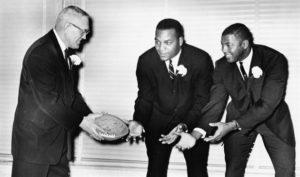 As many as thirty colleges were trying to lure Floyd Little away from Notre Dame. And Syracuse went to the top of the list when coach Ben Schwartzwalder showed up for one of Little’s games. Along with himself, the coach brought Ernie Davis.
As many as thirty colleges were trying to lure Floyd Little away from Notre Dame. And Syracuse went to the top of the list when coach Ben Schwartzwalder showed up for one of Little’s games. Along with himself, the coach brought Ernie Davis.
In 1961, Ernie Davis became the first black to win the Heisman Trophy. At Syracuse, Ernie Davis followed in the footsteps of Jim Brown. Both wore #44 at Syracuse. As his ace-in-the-hole, Schwartzwalder wanted Floyd Little to carry on the tradition of #44.
Remember, by this time Jim Brown was already one of the best, if not the best, running backs to ever play in the NFL. So following his footsteps was a big deal.
Little passed the entrance exam that year, said thanks-but-no-thanks to Notre Dame, and matriculated to Syracuse. He went on to become a three-time All-American and played with the Denver Broncos for nine seasons. But he didn’t just play with the Broncos, he played well enough to became a member of the NFL Hall of Fame.
1962
So, let’s get back to High Noon in that 1962 football season.
I’m playing linebacker for the West Chester freshman team and Bordentown’s on our schedule. I don’t remember the date, but it was near the middle of the season. The week before the game, there was a hellacious rainstorm that weekend. We played our game on Saturday, in the rain, as scheduled, but Bordentown postponed their game until the following Monday.
So on Monday afternoon, a bunch of us piled into a car and drove to Bordentown to watch their game. Don’t remember who they played.
Floyd Little’s reputation proceeded him. At that point he was sill headed to Notre Dame, and we knew that. We also knew BMI was riding an undefeated streak, racking up a lotta points and holding their opponents to not so many. And we were told Little was scoring like three or four TDs a game. Some running, some catching passes, and still others on kickoff and punt returns.
So we scouted them.
I kept my eyes on every move Floyd Little made and diagrammed his plays. You see, I was going to shadow him in our upcoming game.
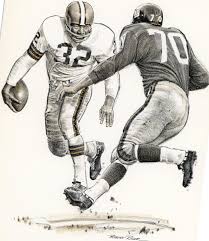 In 1960, CBS produced a TV special called “The Violent World of Sam Huff.” It highlighted Huff shadowing the best running backs in the league. I used that show as the model for our upcoming game. I was going to play the role of Sam Huff and Floyd Little was going to play the role of Jim Brown. Although, of course, Floyd Little had no idea of my intentions or preparation.
In 1960, CBS produced a TV special called “The Violent World of Sam Huff.” It highlighted Huff shadowing the best running backs in the league. I used that show as the model for our upcoming game. I was going to play the role of Sam Huff and Floyd Little was going to play the role of Jim Brown. Although, of course, Floyd Little had no idea of my intentions or preparation.
Gotta tell ya. That scouting paid off. I knew where Floyd Little was going on every play. On running plays, I was there to knock him on his ass with little or no gain, and sometimes a loss. And on passing plays I covered him like the proverbial blanket, either breaking up the passes or knocking him on his ass after a short gain, or no game.
“How’d that taste?” came out of my mouth every time I knocked him down.
He did not score while I was shadowing him. Would love to tell you we won the game, but we lost. The score was something like 13-7. Floyd Little scored one TD – on a punt return when I wasn’t on the field. I blanked him the rest of the game and was proud of myself, although I wished I’d played special teams that day. Maybe we woulda won, and a win against that team woulda been sweet.
After the game, we looked each other in the eye and shook hands. That was the last time I ever saw him up close and personal.
Barry Bowe is America’s Best Crime Writer. In his spare time, he sometimes writes books about the Eagles and the Phillies. For more info, visit his website barrybowe.com.
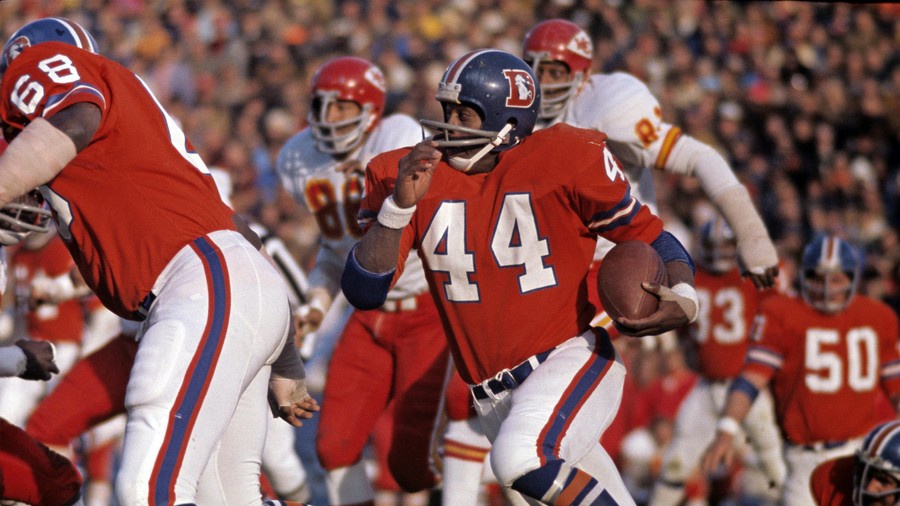
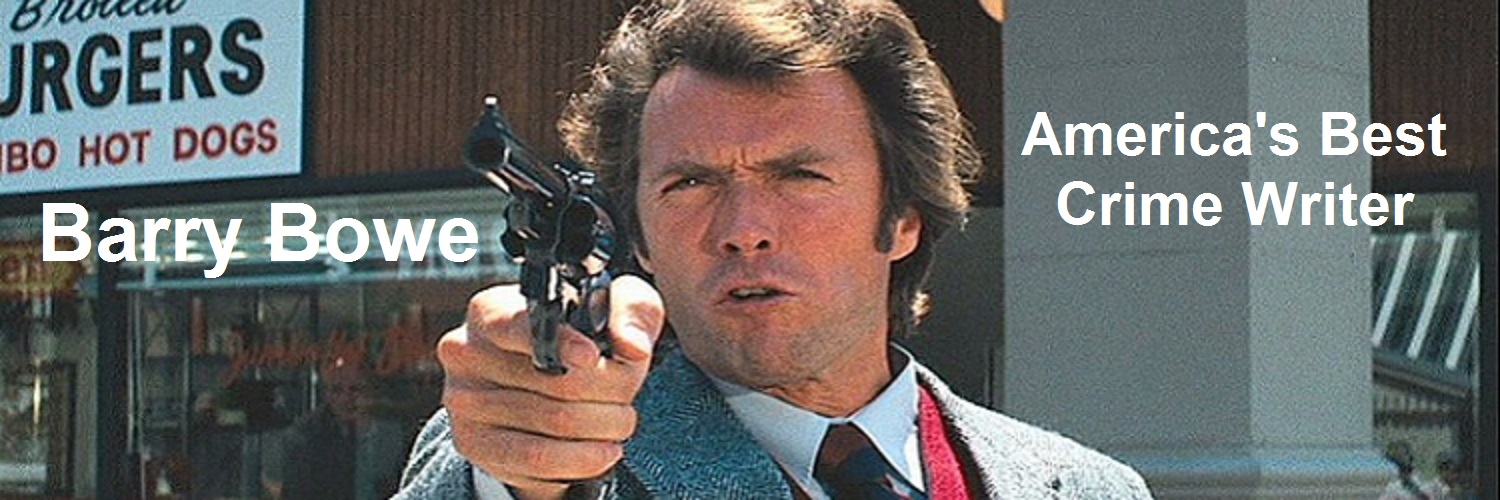


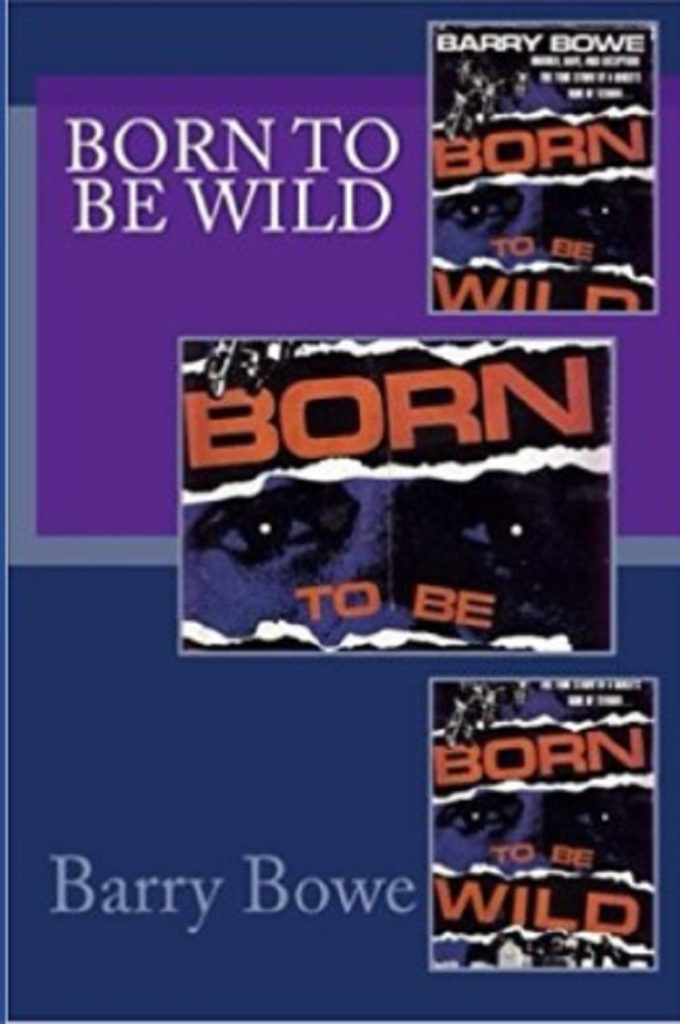

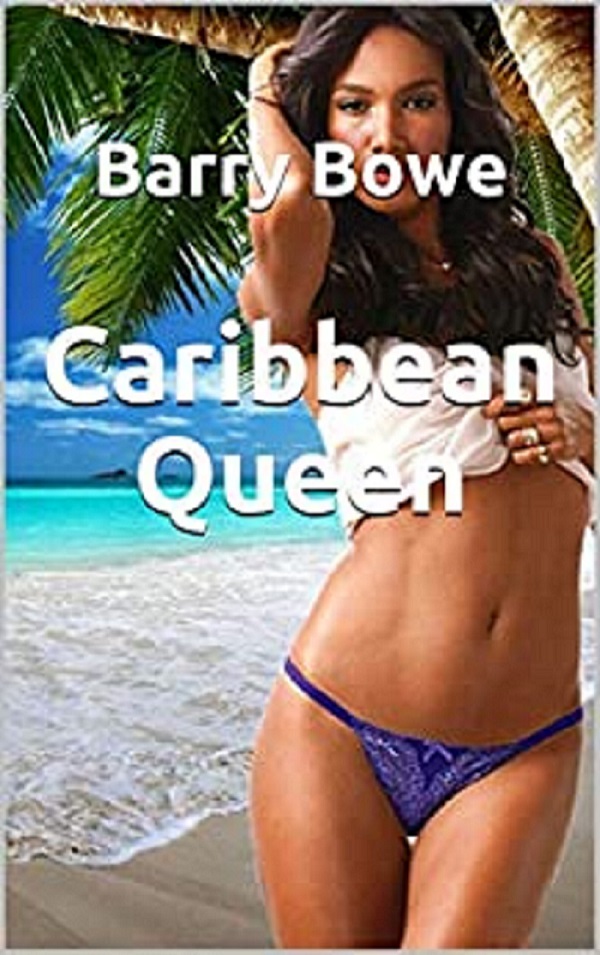
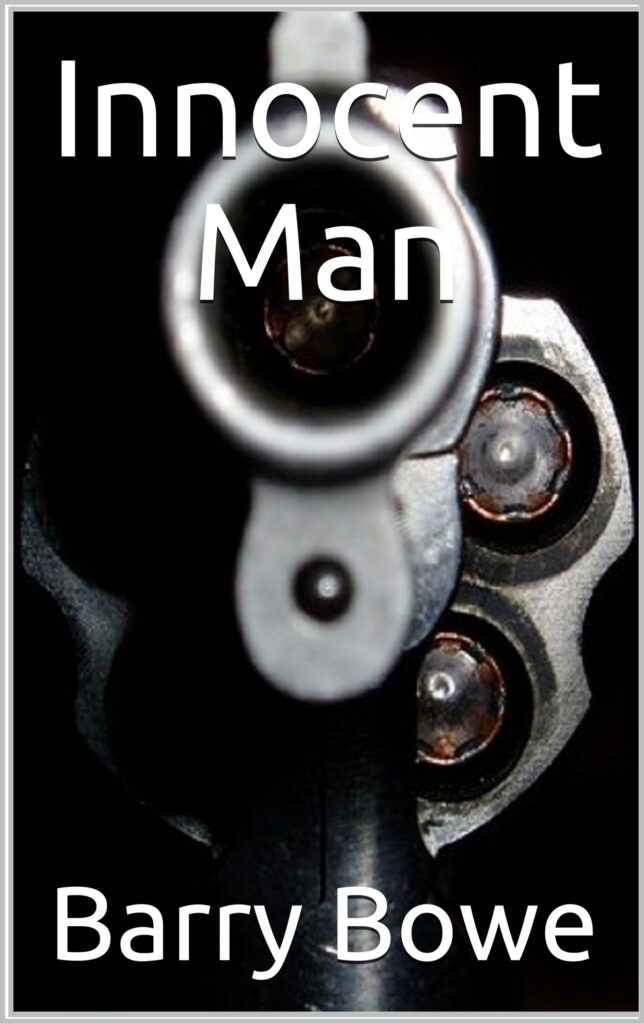
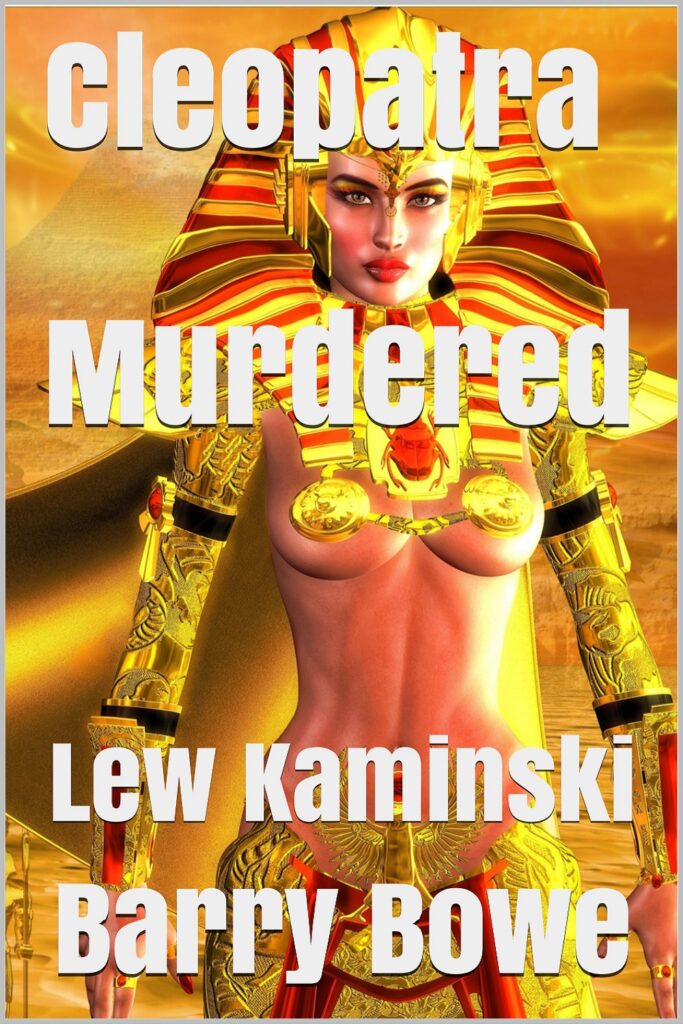
The BMI backfield in the 61-62 season was the following: Don Hartlaub – All Prep, All American – Jack Stricker – Great Temple University Halfback and Floyd Little – All Prep, All Private, All American. Joe Plumeri was a good back who went on to an outstanding career at William & Mary but he was not first team at BMI. It is noted that it didn’t take a “rocket scientist” to figure out the BMI offense and where the ball was going. They ran the “single wing” from way back when leather helmets were used. There is a famous picture of the BMI “mighty wall” with strong tackle Lorie McQueen, quarterback Bob Boyer, and halfback Jack Stricker leading Floyd Little in “Student Body Left” and that was truly a “Watch Out Moment” ! Oh yea, I didn’t start but played against West Chester State and the great Terry Eberly from Middletown, Pa in the ‘ 61 game. Don’t remember the score but West Chester had total of -45 yards whole game !!